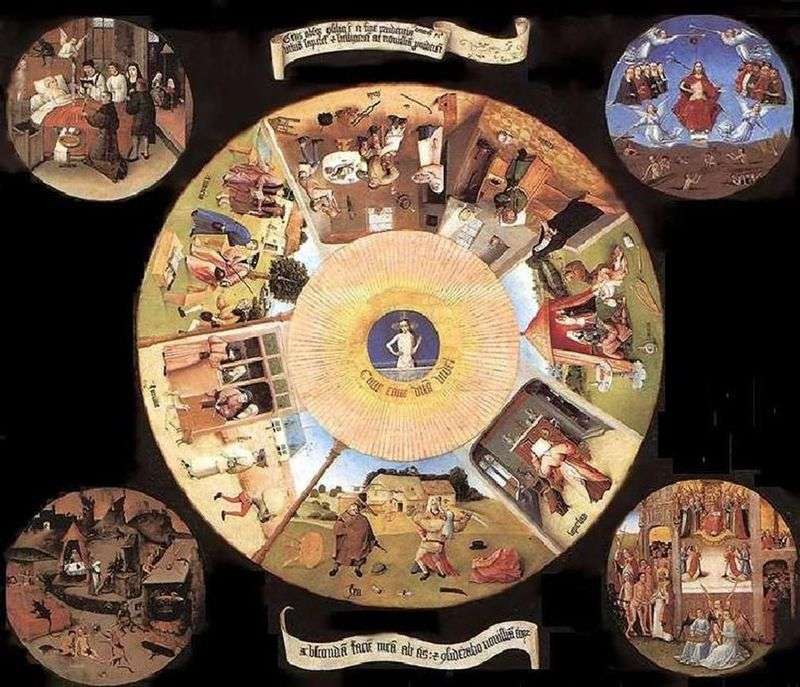
Seven Deadly Sins, one of Bosch’s earliest known works, has a pronounced moralizing character with elements of irony and satire, which has a rather complicated structure: five different diameters of circles on a dark background, suggest that this is the table top – a table top painted master.
The custom to paint tables was then quite common. Such work did not shun well-known artists. We know, for example, that the earliest work by the great German Hans Holbein the Younger, which reached us, was the painted table cover, very damaged, but preserved. It was this work of Bosch that hung in the private chambers of the Spanish King Philip II. She was between his office and the bedroom, so that, passing from room to room several times a day, the monarch could contemplate the symbols of human sins and reflect on the sinful nature of man.
This is one of the most clear and moralistic works of Bosch provided with detailed explanations of the meaning of the quotations from the Old Testament from Deuteronomy. Written on the scrolling scrolls: from above: “For they are a people who have lost their reason and there is no meaning in them.” Oh, if they had reasoned, thought about this, they understood what will happen to them! “, Below:” I will hide my face from them and I will see what will be their end; for they are a corrupt generation; children in whom there is no loyalty. determine the theme of this work. In the center is something like an all-seeing eye. In the middle is a kind of pupil, in which Christ is depicted on the hip, standing in a sarcophagus. Christ sees everything, he is in the center of the world, he is in the center of this conditionally depicted eye. Below is the inscription: “Beware, beware, God sees everything.”
It’s not actually the eye, but a clear hint at it. The all-seeing eye sees everything, but it does not interfere in the course of things for reasons that are incomprehensible to us, incomprehensible to us. The torments of Christ – the pledge of humanity – are almost in vain. He points to his wound in his side, he once again appeals to people, but this appeal is almost unheard of. A wide band running around this quasi-pupil resembles the iris. The circle is lined with rays, which at the same time somewhat resemble the figure of the iris.
And, finally, on the outer, widest strip, seven scenes are depicted, which symbolize seven deadly sins. Each sin is marked with an inscription and interpreted by the artist in the form of a genre scene. Thus, Bosch creates a generalized picture of humanity, mired in sins. It is interesting to pay attention to this: we traditionally speak of seven sins, although strictly speaking, these are not sins, as actions – theft, murder or other sinful deeds of a person. The seven deadly sins in the Catholic tradition are, rather, the seven properties of a person, the seven traits of his character that lead to these crimes and misdemeanors. Seven sins traditionally, as you know, are opposed by the seven virtues. Three religious Christian virtues are four worldly. Bosch, depicting sins, does not refer to abstract images. In Bosch, these are skits, quite vital in meaning, but grotesque, out-of-the-picture images. Then follows the inscription – a representation of the seven deadly sins that can destroy the soul, with their Latin names:
In Hieronymus Bosch, if “to read”, according to the composition, from “six hours” counter-clockwise: anger, conceit, sweetness, laziness, gluttony, achnost, envy. The artist finds for each of them an understandable, life example, shown with a sneer.
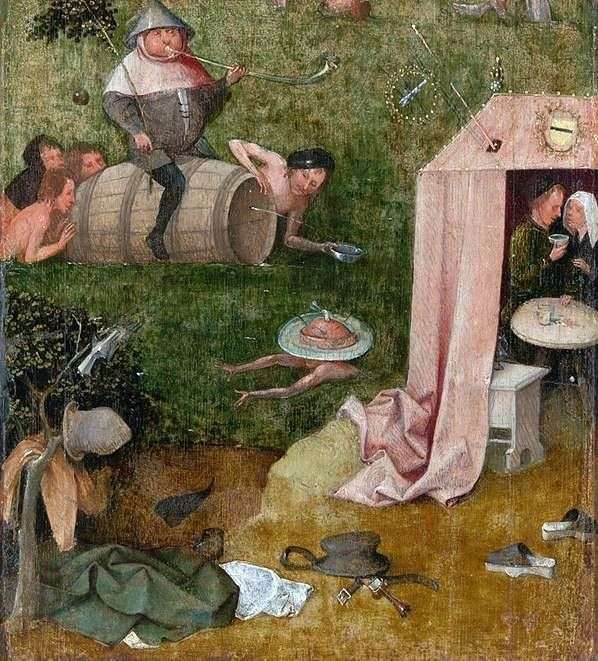 Allegory of gluttony and lasciviousness by Hieronymus Bosch
Allegory of gluttony and lasciviousness by Hieronymus Bosch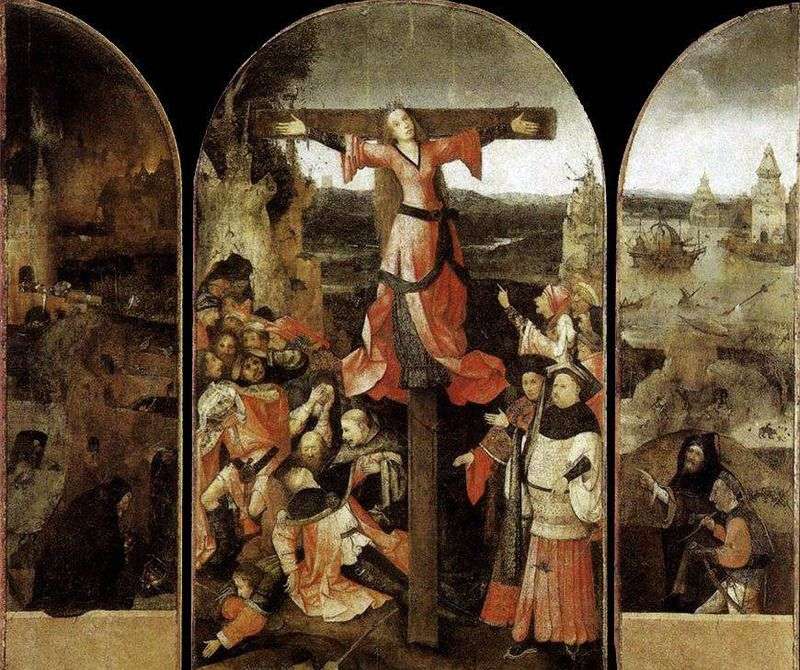 Martyrdom of the Holy Liberty. Triptych by Hieronymus Bosch
Martyrdom of the Holy Liberty. Triptych by Hieronymus Bosch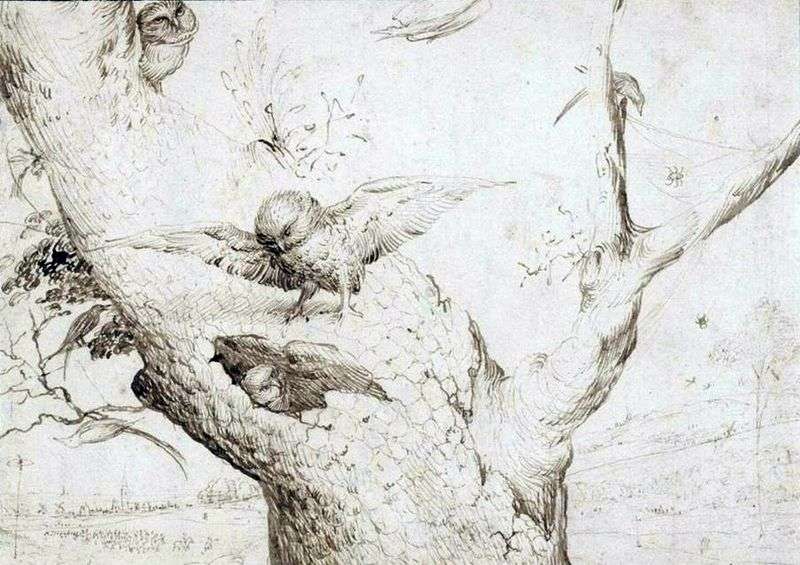 Nest of owls by Hieronymus Bosch
Nest of owls by Hieronymus Bosch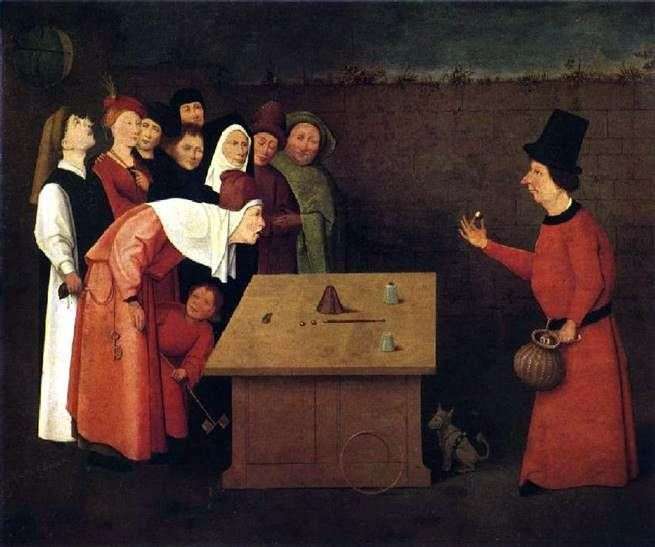 Magician Charlatan by Hieronymus Bosch
Magician Charlatan by Hieronymus Bosch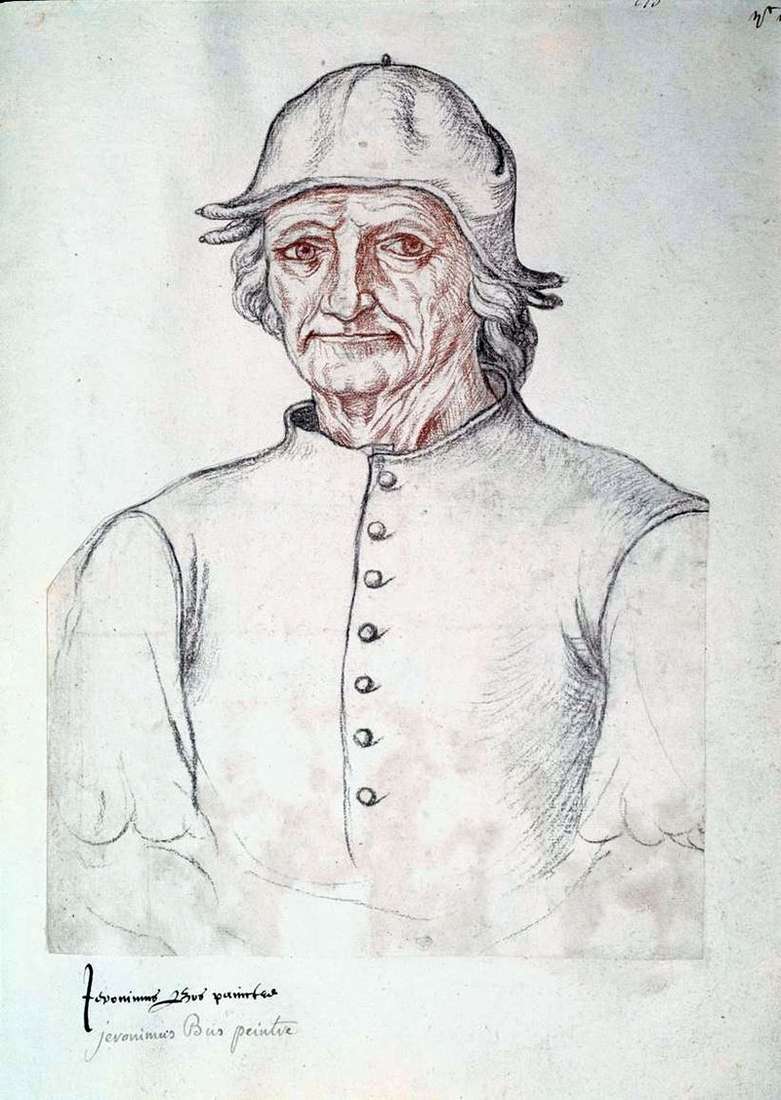 Self-portrait by Hieronymus Bosch
Self-portrait by Hieronymus Bosch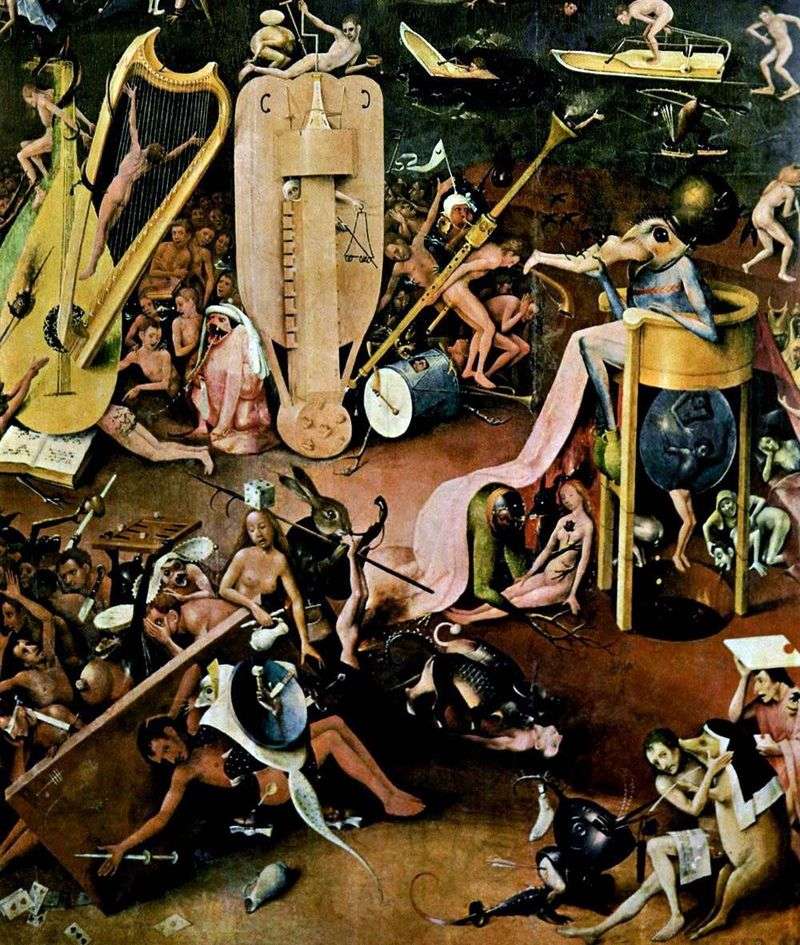 Hell. Detail of the triptych Garden of earthly pleasures by Hieronymus Bosch
Hell. Detail of the triptych Garden of earthly pleasures by Hieronymus Bosch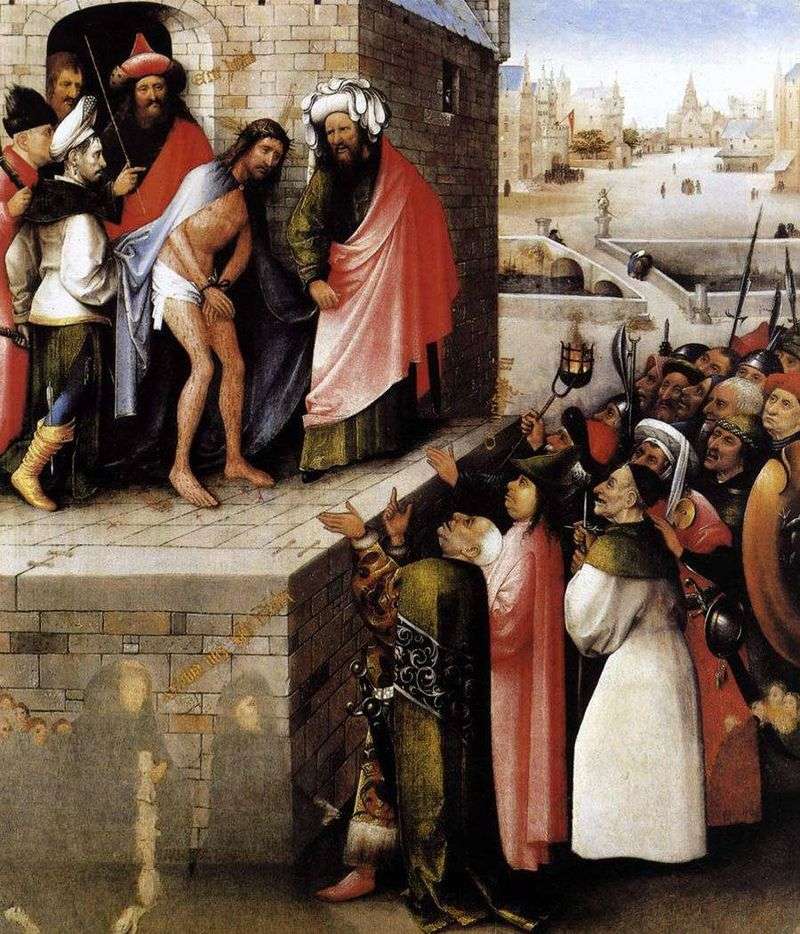 Ecce Homo by Hieronymus Bosch
Ecce Homo by Hieronymus Bosch Marriage in Cana of Galilee by Hieronymus Bosch
Marriage in Cana of Galilee by Hieronymus Bosch